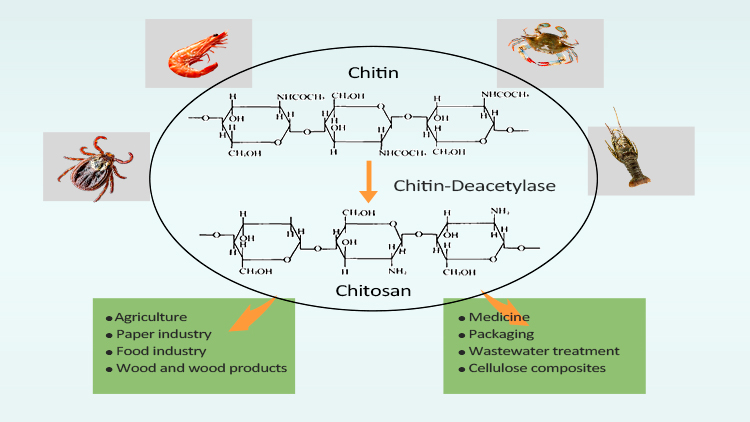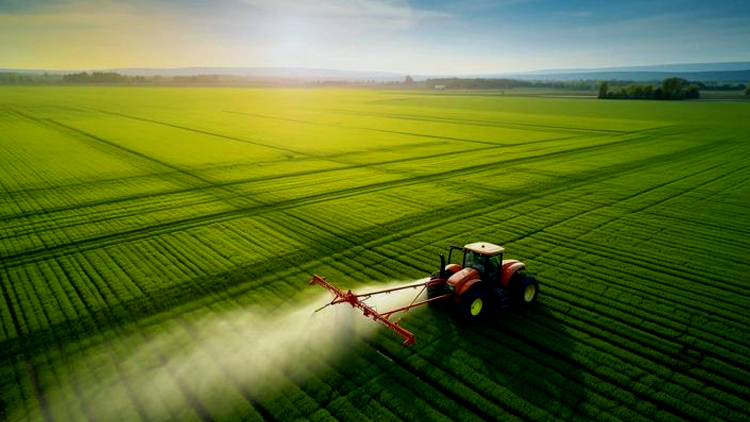Chitosan: A Versatile Material with Expanding Applications

Chitosan (CAS 9012-76-4) is a natural polysaccharide derived from chitin, found in the exoskeletons of crustaceans such as shrimp and crabs. Due to its biocompatibility, biodegradability, and non-toxicity, chitosan has gained significant attention across various industries, from biomedicine to agriculture. This article explores the diverse applications of chitosan and highlights its synergies with other products, such as tranexamic acid in cosmetics and sodium gluconate in eco-friendly construction materials.
Biomedical Applications of Chitosan

Wound Healing and Tissue Engineering
Chitosan's most notable application in biomedicine is wound healing and tissue engineering. It serves as an excellent scaffold material due to its ability to promote cell growth, accelerate wound closure, and prevent infections. Its hemostatic properties enable it to stop bleeding by forming a gel-like barrier at the wound site, making it essential in wound dressings and surgical sponges.
Moreover, chitosan is employed in tissue engineering as a matrix for cell growth. Its porous structure fosters tissue regeneration, making it ideal for applications such as skin grafts and cartilage repair.
Drug Delivery Systems
Chitosan’s biocompatibility makes it ideal for controlled drug delivery systems. It encapsulates drugs or active ingredients and releases them over time, providing sustained delivery, which enhances therapeutic efficacy and reduces side effects. For example, chitosan nanoparticles are being studied for targeted cancer therapy, delivering anticancer drugs directly to tumor cells while sparing healthy tissue.
Synergistic Product
Tranexamic Acid (CAS 1197-18-8): In dermatology and cosmetics, tranexamic acid is often combined with chitosan-based gels or formulations. Known for its skin-lightening and anti-pigmentation effects, tranexamic acid can be delivered through chitosan hydrogels, making it more effective in treating hyperpigmentation and promoting even skin tone in cosmetic products.
Agricultural Applications of Chitosan

Chitosan is increasingly recognized for its role in sustainable agriculture. It is used as a biostimulant to enhance plant growth and as a pesticide to stimulate a plant's natural defense mechanisms. By activating a plant’s immune response, chitosan helps plants resist fungal and bacterial infections, reducing the reliance on harmful chemical pesticides.
Fertilizer Enhancement
Chitosan is often used as a fertilizer coating, controlling the release of nutrients and ensuring plants receive them over time. This improves efficiency and reduces nutrient runoff into the environment. It also enhances soil quality by promoting microbial activity, making it a key component in organic farming practices.
Water Retention and Soil Improvement
Chitosan enhances soil’s water retention capacity, making it valuable in drought-prone areas. By improving soil structure and increasing water absorption, it helps crops grow better, even under suboptimal conditions.
Chitosan in the Food Industry
The food industry also benefits from chitosan's properties. As a natural antimicrobial agent, it is used as a preservative, especially in coatings for fruits and vegetables to extend shelf life. Chitosan-based films are also being developed for edible, biodegradable packaging, reducing plastic waste.
Environmental and Industrial Applications of Chitosan

- Water Purification
Chitosan’s ability to bind with metals and toxins makes it an effective agent in water purification systems. It can remove heavy metals and organic pollutants from wastewater, making it particularly useful for treating industrial discharge and preventing contaminants from entering water supplies. - Eco-Friendly Construction Materials
Chitosan is also gaining traction in the construction industry, particularly in sustainable building materials. It is being studied for use in bio-based composites that improve the mechanical properties of concrete. - Synergistic Product
Sodium Gluconate (CAS 527-07-1): In eco-friendly construction, sodium gluconate is used as a chelating agent and concrete additive. It extends the setting time and enhances the durability of concrete, making it ideal for large-scale projects. When combined with biopolymers like chitosan, these additives contribute to stronger, more sustainable construction materials with a lower environmental impact.
Chitosan in Cosmetics

Chitosan’s film-forming ability makes it a valuable ingredient in cosmetic formulations. It acts as a moisturizing agent and helps improve skin elasticity. Its protective film also shields the skin from environmental damage, making it a popular choice for anti-aging and protective skincare products.
Synergistic Product
Tranexamic Acid: In cosmetic formulations, tranexamic acid is often paired with chitosan for enhanced skin penetration and sustained release. Tranexamic acid reduces melanin production, while chitosan improves skin hydration, making the combination ideal for brightening and evening out skin tone.
The Future of Chitosan in Sustainable Practices
With the growing demand for sustainable solutions, chitosan holds immense potential across various fields, including biomedicine, agriculture, and environmental management. Its biodegradable, non-toxic nature makes it one of the most promising biomaterials for a future centered on sustainability and green chemistry.
For those looking to incorporate innovative, high-performance biopolymers, Foconsci Chemical Industry Co., Ltd. provides a range of high-quality options.
Whether your focus is on sustainability or enhancing product performance, we are committed to supplying chemicals that meet international standards and offer long-term solutions.
Contact us today for more information or to request a tailored quote for your industry-specific needs!


 EN
EN
 AR
AR
 BG
BG
 HR
HR
 CS
CS
 DA
DA
 NL
NL
 FI
FI
 FR
FR
 DE
DE
 EL
EL
 HI
HI
 IT
IT
 JA
JA
 KO
KO
 NO
NO
 PL
PL
 PT
PT
 RO
RO
 RU
RU
 ES
ES
 SV
SV
 TL
TL
 IW
IW
 ID
ID
 LV
LV
 LT
LT
 SR
SR
 SK
SK
 VI
VI
 HU
HU
 TH
TH
 TR
TR
 GA
GA
 CY
CY
 KA
KA
 LA
LA
 MN
MN
 KK
KK
 LB
LB


